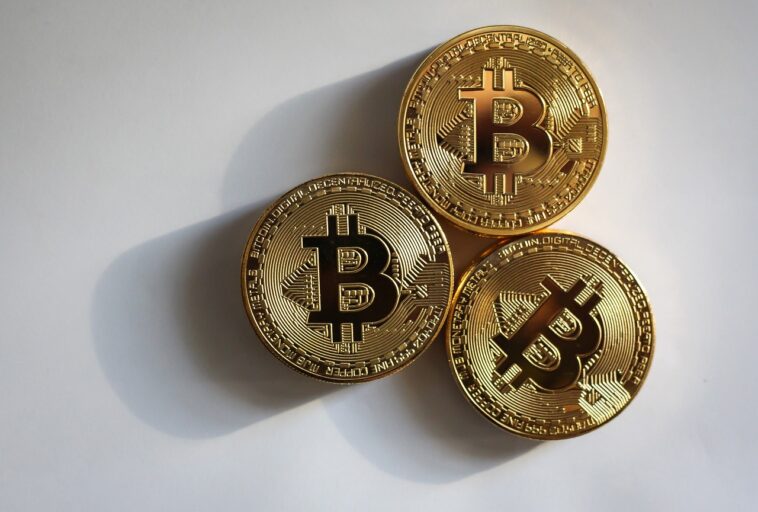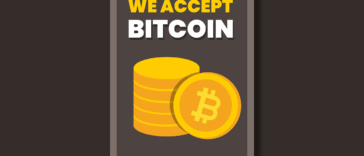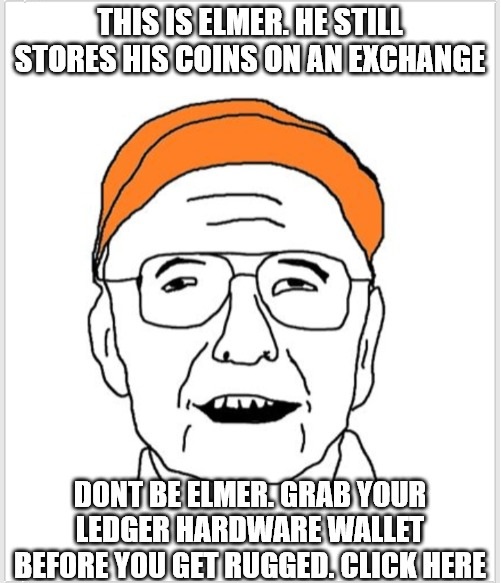
Contents
You Can Find It In This Article
NFTs are experiencing a boom and a slump in the last few years. Can they ever grow again? In 2024 theNFT industry could experience a revival , thanks to increased utility, integration with music and fashion, as well as the growing popularity of NFTs.
This renewed interest can be attributed to the fact that NFTs have the ability to generate new revenue streams, as well as innovative experiences for users. Forbes reports that gaming companies are embracing NFTs in order to give players unique assets within games and ownership rights. The application is a powerful tool for both developer and player profitability.
The growing emphasis on sustainability is another critical factor. NFTs’ environmental impact has long been of concern. However, advancements such as Ethereum’s switch to proof-of stake consensus are helping address these concerns. The technological advances could increase the appeal of NFTs to a wider audience and spark another boom.
Understanding NFTs
NFTs have changed the landscape of digital asset ownership, allowing for unique digital assets to be owned. Understanding how NFTs function and their history is essential as we examine them.
Definition and Function
The NFTs is a unique digital asset that can be verified by blockchain technology. NFTs, unlike cryptocurrencies such as Bitcoin where every unit is the same, are unique. They cannot be traded one to one. Every NFT is unique and has its own information, or metadata.
Uniqueness is important in many applications, including digital art and virtual real estate. For example, artists can use NFTs to sell their digital creations and ensure authenticity for the buyers. Blockchain records every transaction, creating a history that is transparent and unalterable.
Historical Market Performance
In 2021, the NFT market grew explosively as digital collectibles such as Beeple’s digital art were sold in millions. Prices increased as early adopters, investors and collectors flooded the market. The NFTs were a major factor in this frenzy, as they attracted speculators and early adopters.
The initial excitement faded in 2022-2023. As the initial hype waned, factors like concerns about energy usage on Ethereum’s Proof-of-Work mechanism have become more important.
However, by the end 2023, a renewed interest was evident. Experts in the market noted an increased level of awareness, as well as practical applications that go beyond collectibles. This change signals that NFT is maturing and focuses more on long-term sustainability. The analysts believe that if the market continues to evolve in this way, it could have a promising future.
The previous boom and bust
NFTs have seen a lot of highs and lows. If NFTs are to boom again, it is important to understand the factors which led the first surge in sales and those that caused the decline.
The initial surge in the price of gasoline
NFTs will be a huge hit in 2021 due to a number of key factors. Celebs and prominent endorsements were crucial. A number of well-known personalities entered the market and generated widespread media attention.
Ethereum’s smart contracts facilitated creation, purchase, and sale of NFTs. The decentralized technology enabled artists to directly monetize and sell their work without the need for middlemen. This sparked a huge interest among both investors and creators.
NFTs promised also ownership verification and scarcity digital assets. The uniqueness of the tokens and their rarity were valued by collectors, which drove up prices and demand. Trading and speculation were attracted by the perceived high return potential.
OpenSea, Rarible and other marketplaces provide easy-to-use platforms to trade NFTs. The platforms allowed the general public to easily enter the NFT market. This further fueled growth.
The Reasons Behind the Decline
The NFT market started to cool off by late 2021. The significant decline in trading volume was one of the main reasons. MSN reports that trading volume has fallen by 97% since its peak between January 2022 and September 2022.
Oversaturation of the market also played a part. The market was flooded as more creators entered the NFT sector, making it difficult for tokens to be differentiated and maintain value.
The decline in sales was also attributed to environmental concerns about the energy consumption by blockchain technology and Ethereum. The environmental impact of blockchain technology, particularly Ethereum, was also criticized by critics. This led to negative press and some buyers turning away.
Many investors became wary due to the volatility of NFTs prices and the speculation that accompanied it. Many investors suffered significant losses after the bubble burst because of hype-driven buying.
The market has been in decline due to regulatory uncertainty. The NFT market was scrutinized by governments around the world, causing concern about regulations in future and compliance with laws. This further dampened enthusiasm.
Current Market Scene
NFTs’ interest has fluctuated over the years. The market is poised for a revival as recent trends indicate some areas of growth.
Current Trends of NFT Sales
Since its peak in the year 2021, there have been significant changes on the NFT market. The initial excitement waned at the end of 2022 but there was renewed interest in late 2023.
The floor prices of many NFTs have fallen dramatically. Some collections experienced price drops over 80%. However, niche collections with tangible benefits maintained stable pricing.
The shift away from speculation to investments based on value has become a key trend. The collectors have become more selective, and prefer NFTs that offer clear benefits.
OpenSea, Rarible and other platforms have adapted. Many sellers are now focused on digital art of high quality and NFTs based upon utility. The market’s maturity is in line with recent predictions, indicating a sustainable growth path.
Changes in consumer sentiment
The consumer’s perception of NFTs has also changed. The early adopters who were focused on reselling NFTs at a profit have given way to an audience more interested in NFTs’ broader applications.
Twitter analysts have noted that hype-driven cycle has been replaced with cautious optimism. The NFTs are a great technology, particularly in the areas of gaming, digital identities, and tokenized asset.
Technological advancements such as improved blockchain scaling and energy efficient protocols have made NFTs easier to use. Credibility is increasing for projects that offer a genuine community benefit and have a strong utility.
While the speculative frenzy has subsided, observers of the market are increasingly convinced that NFTs play an important role in the future digital economy. This sentiment is bolstered by the positive developments in industry and endorsements on social media.
A Potential Resurgence
This potential revival of NFTs is due to the technological innovation, the new applications, and celebrity endorsements. The NFT market is experiencing renewed investment and interest due to these factors.
Technological Innovations
The NFT market is recovering thanks to technological advancements. The latest developments in blockchain technologies, like Ethereum 2.0, promise quicker transactions and lower transaction fees. It can improve the experience of users when purchasing and selling NFTs.
Polygon, a Layer-2 solution that offers scalable and affordable options for NFT transactional needs, is also growing in popularity. It could also attract investors and users, stabilizing market.
Integrating NFTs in virtual reality platforms or video games opens up new growth opportunities. Adopting NFTs into games such as Decentraland or Axie infinity, for example attracts attention and investments.
New Use Cases
The potential for a resurgence in NFTs is being fueled by new and exciting applications. In addition to digital art, the NFT has applications in real estate and fashion. Kings of Leon, for example, have created albums that are NFTs to give fans a unique experience and ownership.
NFTs have been used in the real estate industry to make transactions transparent and more secure. Fashion brands also use NFTs to create virtual apparel and exclusive merchandise. This allows them to reach a young and tech-savvy market.
Social tokens are gaining in popularity, where creators and influencers can use NFTs to monetize influence. The diversification of NFT uses makes them more attractive and durable in the long term.
Influence of Celebrity Endorsements
The potential revival of NFTs is dependent on celebrity endorsements. Snoop Dogg and Paris Hilton are just a few of the high-profile people who have supported NFTs.
The endorsements of these celebrities can generate massive interest in the public and bring new investors. Snoop Dogg, for example, has inspired other celebrities and artists to investigate this technology.
Twitter and other social media sites are awash with celebrity endorsements and conversations. As more and more people invest in NFTs as a result of this, the potential for market recovery is boosted.
Challenges and concerns
NFT faces a number of significant challenges. These range from market dynamics to regulatory concerns and environmental issues. These challenges will help investors to understand the market.
Regulations can be a barrier to success
The regulatory uncertainty that exists is one of the biggest challenges for NFTs. The laws of different countries affect digital asset ownership and sale. In the United States, The Securities and Exchange Commission has examined NFTs and platforms.
Other governments have also introduced stricter requirements for anti-money laundering. The regulations may have an impact on market operation and behavior. NFT platforms may be discouraged from taking part if AML rules are tightened.
The changing regulatory environment creates a difficult and complex landscape for NFT markets to navigate. Compliance is a constant effort for companies, as regulations are constantly evolving.
Market volatility and risk
NFTs are also concerned about market volatility. Market volatility can both be thrilling and dangerous for investors. Twitter is awash with opinions of crypto experts, such as @cryptomanran. They often talk about the market’s boom-and bust cycles.
Market risks can affect even established platforms. Digital assets can be affected by sudden price drops due to fluctuations in interest from users and speculation bubbles. Investors must be cautious and platforms need to control expectations and manage risks.
Investors find it difficult to determine the real value of NFTs due to the lack of historical information. The complexity of investment strategies is increased by this.
Environmental Impact
Environmental impact is a major concern for NFTs. NFTs can be produced on large-scale blockchains, which consume a lot of energy. This raises concerns over their carbon footprint. Some platforms tried to use eco-friendly Blockchains and offset their CO2 emissions. However, the issue persists.
Beeple, a famous digital artist who is well-known for his environmental concerns, expressed them on Twitter. He emphasized the importance of greener solutions within the industry. This sentiment is echoed by community members pushing for more environmentally-friendly practices.
To address these issues, efforts include exploring new technologies and adopting consensus mechanisms that are more energy efficient. The challenge remains, however, and it is the response of the industry that will determine whether or not the public and investors continue to support the project.
The Forbes article offers more details on NFTs and their impact on the environment, as well as market challenges.
Investors’ Strategies
If you want to increase your chances of success, a well-planned and diverse approach will help. Investors should conduct thorough research and diversify their portfolio to maximize their chances of success.
Conducting Due Diligence
Due diligence is crucial. It is important to do your research before investing in NFTs. This includes the background of the project, the community, the developers, and any technology involved. Search for NFTs that have a consistent growth rate and real use cases. Quantified Strategies, for example, can offer valuable insight into market trends. You can gain valuable insights by listening to experts in crypto on Twitter like @CryptoCobain and @larrychernoff. NFTs are increasingly being discussed in conjunction with emerging tech fields such as AI and metaverse. This could signal new growth opportunities.
Portfolio Diversification
Diversification reduces risk. Spreading investments over multiple assets, rather than investing in one NFT can protect against volatility. Diversifying your investments can help you avoid costly mistakes. Include different NFTs such as real estate, art and gaming tokens. Balance can be achieved by diversifying into different sectors. For example, gaming NFTs on popular platforms like Axie, Infinity, or Decentraland. BeInCrypto articles, for example, suggest that diversification is not limited to NFTs alone but should also include the wider crypto market. Social media portfolios that are diversified can be a source of inspiration as well as practical examples.
Long-Term Versus Short-Term Investing
When deciding between short-term and long-term investments, it is important to weigh the risks and benefits. In the crypto-community, “HODLing”, or long-term investing, is the process of buying NFTs that have the potential to grow significantly over time. Quantified Strategies claims that this strategy is a way to mitigate market fluctuations. Short-term trading is a way to take advantage of quick movements in the market. Monitor platforms such as OpenSea for price trends daily to make quick trades. Thought leaders on Twitter have captured the current market sentiment well. They indicate a mixed outlook. Some are advocating patience for long-term gains, while others urge to take advantage of short-term trading opportunities amid market volatility.
Community and Networks: Their Role
The resurgence in NFTs is largely due to the role played by communities and networks. The NFT market will thrive once again if we build robust ecosystems, and use social media to its full potential.
Build Strong Ecosystems
A solid ecosystem will be essential to the NFT industry’s sustainability. The infrastructure is provided by blockchain networks such as Ethereum and Solana, but it’s the community projects and collaborative efforts that drive the market. Influential brands in gaming, fashion, and music are adopting NFTs to expand the ecosystem.
Collaborations between developers and artists are a driving force for innovation in the NFT sector. OpenSea, Rarible and other platforms offer artists the opportunity to display their digital content. By engaging their audiences and improving the user experience, these platforms help create vibrant communities. These platforms are updated regularly to maintain interest.
The Importance Of Social Media
The NFT revival is largely due to social media. Twitter, Instagram and Discord have become the primary platforms for NFT fans to share art, discuss trends and promote their new projects. Influencers, creators and those who interact with their fans drive interest and momentum in the NFT sector.
Pranksy, the renowned influencer in cryptography, tweeted about a possible comeback for NFTs. Beeple, a popular artist, continues to post his work, generating excitement amongst his huge following. The social media platforms host AMAs and live streamings, allowing for real-time feedback and interaction.
Future Outlook
In 2024, the NFT market is expected to undergo significant changes. Expert insights and trends analyses reveal both challenges and opportunities.
Predictions, Speculations
Analysts are looking for any signs that could indicate a revival of NFT. Market analysts are now focusing on absolute value and utility, rather than speculation. The market is developing new applications for gaming, digital collectibles, and virtual real estate. Technology advancements such as increased blockchain scaleability and reduced transaction fees could boost growth.
Tweets from famous crypto enthusiasts hint at growing confidence. Integration of NFTs into social media platforms may increase participation. The market players also explore cross-platform compatibility to potentially expand the audience.
Expert opinions
The future of NFTs is a subject that experts have different opinions about. Amanda Crain is a blockchain expert and investor who believes that NFTs are likely to become standard Internet infrastructure. A stronger foundation, and the increased interest of mainstream society could be important drivers.
Peter James, a crypto analyst, believes that the value proposition of NFTs is changing. He noted that as the crypto-industry matures, NFTs will follow. Forbes’ insights indicate renewed interest in crypto due to projects that focus on long-term value.
NFTs are expected to be a success in 2024. The market is facing challenges, but the move towards real utility as well as technological advancements gives hope of a revival.



















Comments
Loading…